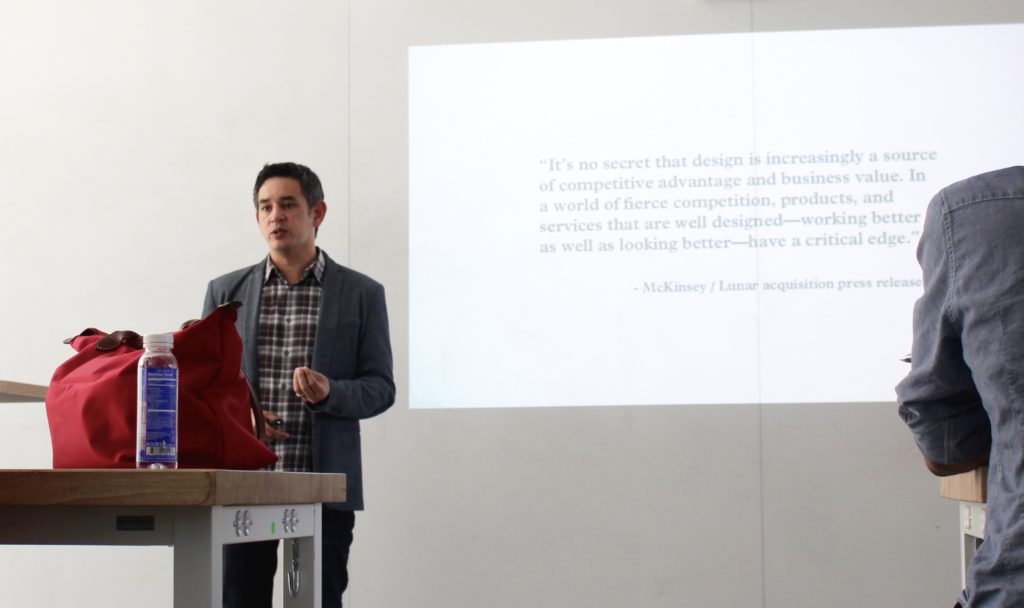
How is design reshaping the technology industry? What role does it have in the future of tech?
These are but a few of the questions Misha Cornes addressed last Friday when he spoke as part of the Design Field Notes Speaker Series at the Jacobs Institute for Design Innovation. Misha is no stranger to the field of Design Strategy, having worked as an Innovation Strategist for LUNAR Design, and more recently, being made Head of Innovation Strategy at LUNAR. His background lies in Strategy, Industrial Design, Branding, and Digital Products. And best of all, he’s one of our very own – Misha graduated from the Haas School of Business in 2001 with an MBA focusing on marketing and finance.

Misha Cornes, Head of Innovation Strategy at LUNAR
Throughout his time in the industry, Misha has witnessed a shift in the paradigm of design in technology. It used to be that companies would bring in outside designers for projects as needed. However, recent years have seen a consistent trend of major tech companies acquiring creative agencies altogether. In 2014, Google acquired product design firm Gecko Design, and Facebook has owned top design agency Hot Studio since 2013. The phenomenon hit a lot closer to home for Misha this year when McKinsey and Co. acquired LUNAR, presenting a unique partnership of management consulting and design. And not only is this kind of acquisition a trend, but an upward trend at that, with many other tech companies and startups following suit and predicted to follow suit.
Some say that the shift is a result of an unprecedented change in the value of user experience – how a product feels or looks is increasingly becoming the deciding factor towards the purchase of a product over its competitors. In fact, often times, the product design is the solution itself, as Misha points out with the simple example of LUNAR’s Belle-V Ice Cream Scoop, which is angled in such a way as to create the perfect scoop of our favorite cold treat. Another great example is Apple’s integration of the mouse below the keypad of laptops back in 1995 – the trackpad is now seemingly obvious but nonetheless a revolutionary design solution to a common user experience issue.
Misha argues that tech companies are recognizing the role of design in delivering value to clients. Most startling of the evidence he presents for this is the Design Index from the Design Council of the UK – an index of 61 design-led businesses – has out-performed the FTSE 100 [Financial Times Stock Index 100] by more than 200% over the past decade. The 2007 report states that “this proves that businesses using design effectively do better than their peers, by a long way, and over a long time.” Design is able to improve customer loyalty, fuel revenue and growth, simplify how one does business, and help tech companies adapt to an increasingly customer-centric culture. No longer is product design the final embellishment to a well-functioning technology, but it is being woven into the very fabric of the tech industry itself.
So what does this mean for us? Essentially, we can no longer overlook the importance of having a design mindset if we want to keep up with the changing consumer tide. Misha presents four key components of the design mindset – having a beginner’s mindset (being curious and open to possibilities), being optimistic (constantly asking is a better answer out there?), being experimental (being action-oriented and empirical) and being collaborative (having the humility to acknowledge that the sum is smarter than any of its members alone). We must see design as both the outcome and the ‘how’, and apply this at a systems level through teaching the design mindset to engineers and tech entrepreneurs alike.
Design, although once overlooked, is now at the forefront of tech and innovation. Design is redesigning the tech industry as we know it.
